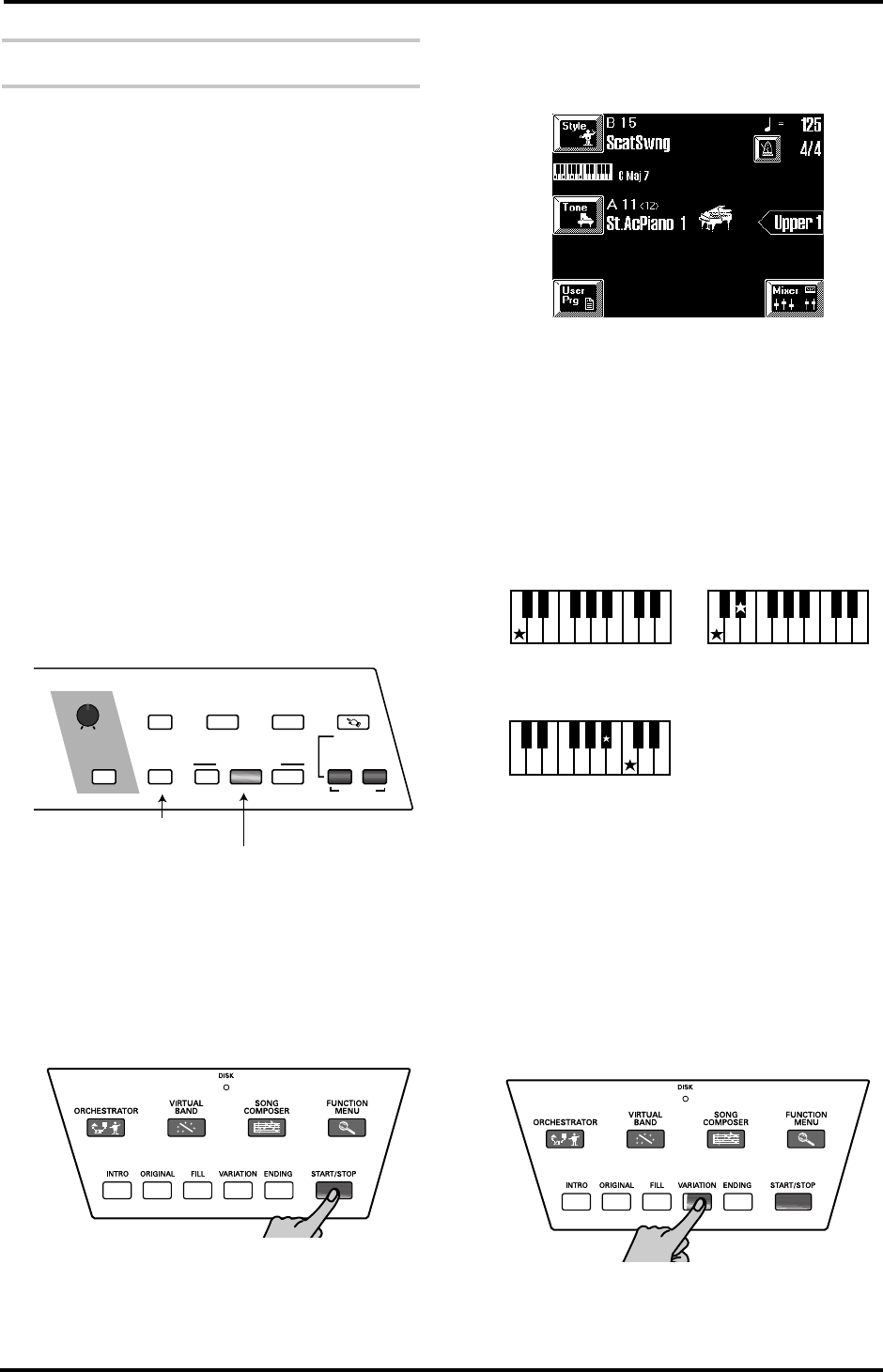
25
VA-76 – Using the VA-76’s Arranger
3.4 Using the VA-76’s Arranger
The Arranger is an interactive “playback sequencer”
that provides the accompaniments. These accompani-
ments are called “Music Styles”, because they provide
an 8-track backing for a given musical genre (Rock,
Pop, Dance, Waltz, etc.).
The Arranger is interactive because it allows you to
transpose the melodic accompaniment parts (bass,
piano, guitar, etc.) simply by playing chords. In most
instances, you will probably do so with your left hand.
Each Music Style comprises several patterns so that
you can vary the accompaniment by starting with an
introduction, using a simple accompaniment for the
verses, a more elaborate one for the choruses, and by
ending your songs with an “Ending” pattern.
Let us first look at the most important aspects for
operating the Arranger:
1.
Switch on the VA-76 and use the Easy Routing
function (see page 22) to select a “In a BAND” regis-
tration with a “Combo” or “Big Band” option.
Of course, you can also register the VA-76 manually.
But using the Easy Routing function is probably
quicker.
2.
If the [SYNC] button lights (which is probably the
case), press it to switch it off.
3.
Set the [VOLUME] knob to a reasonable level (e.g.
about “1/4”).
4.
Check whether the Keyboard Mode [ARRANGER]
button lights, and press it if it doesn’t.
5.
Play a chord in the left half of the keyboard (to the
left of the C key below the USER PROGRAM [UP]
button), then press the [START/STOP] button.
The [START/STOP] button lights, and the Arranger
starts playing the accompaniment of the selected
Music Style. The accompaniment pattern (“Music
Style”) is sounded in the key that corresponds to the
chord you played. The name of the chord you are play-
ing is displayed below the name of the currently
selected Music Style:
6.
Play another chord in the left half of the keyboard.
The same pattern is now played in that key. In fact,
you don’t even have to play full chords:
•For major chords, playing just the root note is enough
(e.g. “C” for C major, “A” for A major, etc.)
•For minor chords, playing the root note and the third
key to its right will do.
•For seventh chords, playing the root and the second
key to its left is enough.
Note: The function that takes care of this easy fingering is
called “Intelligent” (see page 102). See also page 252 for a
list of other chords that can be played using this system
(augmented, diminished, etc.).
What you hear now is the “ORIGINAL” pattern (the
[ORIGINAL] button lights). This is the simple accom-
paniment of the selected Music Style. Let’s listen to the
accompaniment your could use for your choruses:
7.
Press the [VARIATION] button.
As soon as the ORIGINAL pattern is finished, the
[VARIATION] button lights steadily, and the Arranger
plays a different accompaniment called VARIATION.
ON/OFF
SYNC
MELODY
INTELL
OTHER
DOWN
FREE PANEL
UP
ARRANGER PIANO
TRANSPOSE
M-FX
KEYBOARD MODE USER PROGRAM
CONTROLLERS EFFECTS ONE TOUCH
MIN MAX
M-VALUE
The [SYNC] button must be off.
The [ARRANGER] button must light.
C major C minor
C 7
Only the key that corresponds
to the chord's name.
Root note + third key to
the right.
Root note + second key to
the left.
VA-76.book Page 25 Friday, January 12, 2001 12:35 PM


















